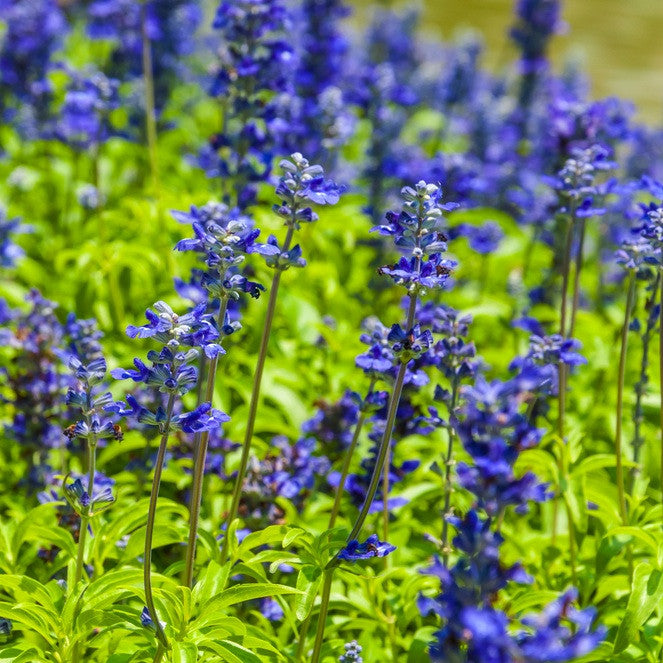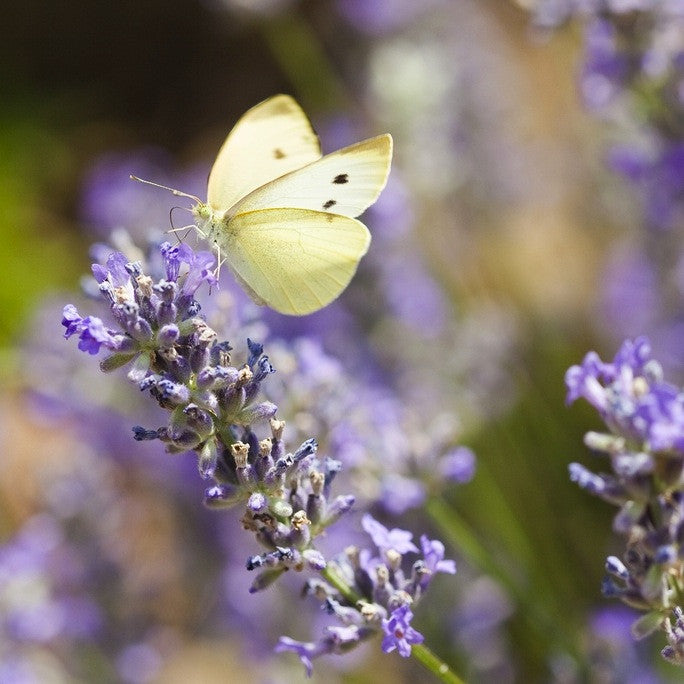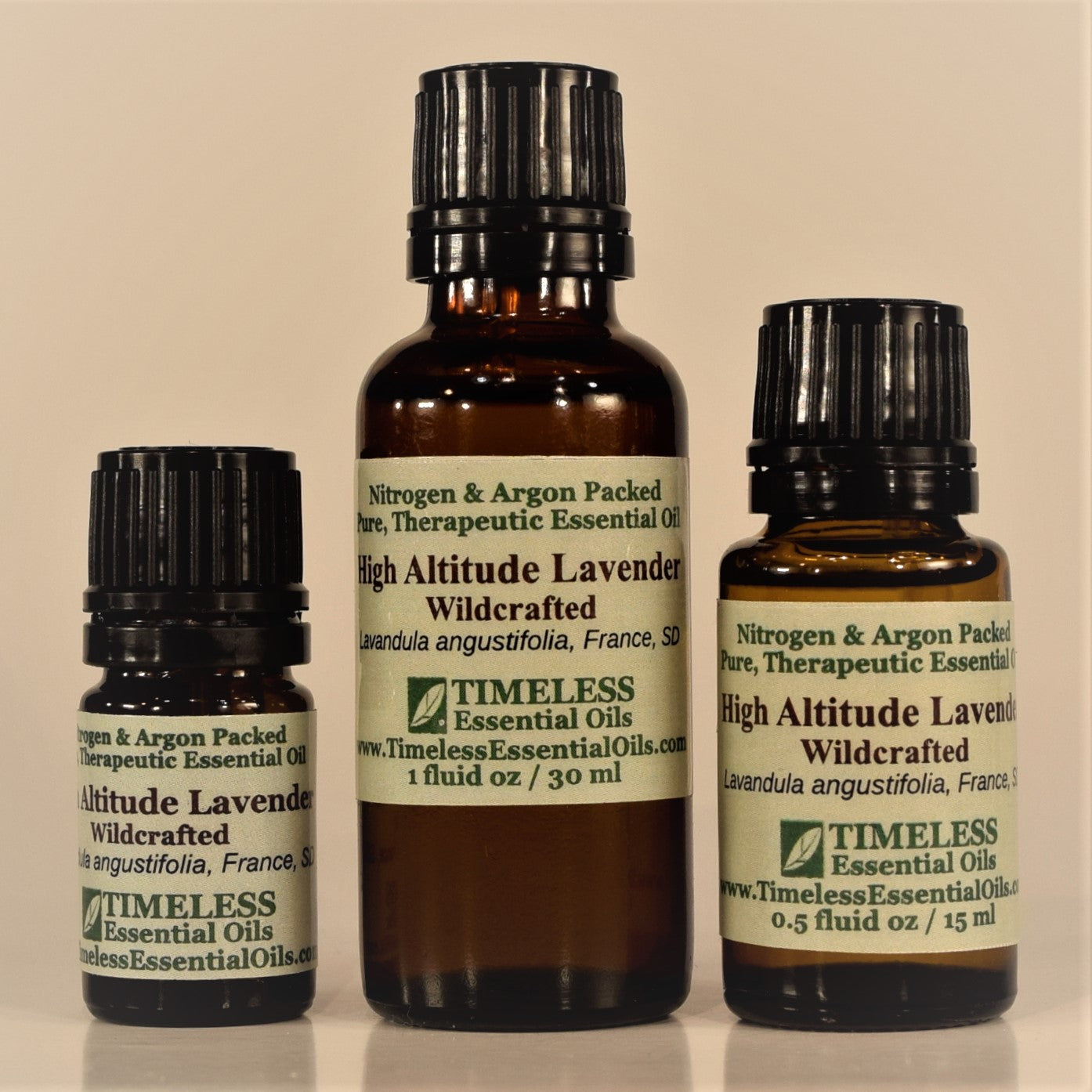TIMELESS Essential Oils
Lavender, High Altitude
Couldn't load pickup availability
Pure, Therapeutic High Altitude Lavender essential oil, Wildcrafted
Product Details
Botanical name
Lavandula angustifolia (Lavandula officinalis)
Extraction method / Source
Steam distillation of the flowers
Aroma
Sweet, floral, herbaceous -- more intense than lavender grown at lower altitudes
Note classification
Middle
Odor Intensity
5
Key constituents
Linalyl Acetate, Terpenyl Acetate, Lavandulyl Acetate, Geranyl Acetate, Linalool, Cis-beta-Ocimene, Terpinene-4-ol, Trans-beta-Ocimene (Note: High Altitude Lavender has a significantly higher Ester content than Lavender grown at lower altitudes.)
Plant description
Botanical family: Laminaceae or Labiatae (mint)
Lavender is an evergreen plant native to the areas around the Mediterranean Sea and is now grown in many areas around the globe. It grows to 3 feet high and produces fragrant blue/purple flowers and soft green leaves. Lavender plants grown at high altitudes have a significantly higher Ester content, increasing the relaxing properties of the essential oil.
Regions of Production
France(Barreme region)
Growing Practices
Plants indigenous to the area are harvested from the wild, away from chemical fertilizers and pesticides.
History / Fun Facts
The name Lavender is derived from the Latin word lavare, meaning "to wash", referring to its amazing antimicrobial properties. The ancient Greeks and Romans perfumed their bath waters with lavender and burned lavender flowers to please their gods. Today, Lavender essential oil is regarded as one of the most useful and versatile therapeutic oils and is known as one of the seven polyvalents ( useful against many toxins). Lavender is used in some zoos to soothe the lions and tigers. There are 28 different species of lavender, also spelled lavendar.
Properties
analgesic, anticonvulsant, antiphlogistic, antirheumatic, antiseptic, antispasmodic, antiviral, bactericide, carminative, cholagogue, decongestant, deodorant, diuretic, emmenagogue, fungicide, hypotensive, nervine, restorative, sedative, sudorific, vulnerary (Battaglia, 2003).
Please refer to the Glossary for terms which may be new to you.
Uses / Benefits
Most commonly used for relaxation and skin healing. Also used for respiratory infections, high blood pressure, arteriosclerosis, muscle and joint pain, insomnia, nervous tension, menstrual imbalances, PMS, skin conditions (stretch marks, scarring, psoriasis, eczema, cellulite, acne), insect bites, burns, sunburn, hair loss, digestive complaints. It is truly the "oil of a thousand uses". Lavender is the most important essential oil I carry in my First Aid kit. A popular essential oil used in natural perfume making.
Fragrant influences
Improves concentration and mental clarity, calming, balancing (both physically and emotionally). Lavender essential oil is calming in small amounts and will stimulate the nervous system in higher concentrations.
Modes of Administration
Topical: massage, compress, skin care lotions, creams and ointments. Lavender is one of the few essential oils which are safe to use neat (full strength).
Inhalation: direct inhalation, diffuser, oil vaporizer, aromatherpay inhaler.
Blends well with
Anise, Bergamot, Black Pepper, Camphor, Cedarwood, Chamomile, Clary Sage, Clove, Cypress, Eucalyptus, Geranium, Grapefruit, Juniper, Lemon, Lemongrass, Mandarin, Marjoram, Oakmoss, Orange, Palmarosa, Patchouli, Peppermint, Pine, Ravensara, Rose, Rosemary, Tea Tree, Thyme, Vetiver
Safety
Non-toxic, non-irritating, non-sensitizing (Battaglia, 2003). Lavender essential oil is one of the few essential oils which can safely be used full strength (neat) on the skin. Avoid if you have an estrogen-dependent cancer. May be deeply relaxing: avoid prior to activities that require concentration.
Notice
This information is for educational purposes only. It has not been evaluated by the US Food and Drug Administration. It is not intended to diagnose, treat, cure or prevent any condition or disease. Although we strive to provide information which is accurate and up to date, we cannot guarantee the accuracy or completeness of this information.
Precautions
Pure essential oils are highly concentrated plant extracts. Do not use them undiluted, or in the eyes or mucus membranes. If applying an essential oil to the skin, always dilute it with a proper carrier oil and test on a small patch of skin before applying to a large area. Do not take them internally except under the direction of a qualified professional trained in Aromatherapy. Always familiarize yourself with the safety, contraindications and proper preparation of each essential oil before use. Note that when using essential oils for children and the elderly, very low concentrations should be used. Keep all essential oils away from children and pets.
References
Althea Press, Essential Oils: Natural Remedies, 2015. Althea Press, Berkeley, CA.
Battaglia, Salvatore, The Complete Guide to Aromatherapy, Second Edition, 2003. The International Centre of Holistic Aromatherapy, Brisbane, Australia
Cooksley, Valerie Gennari, Aromatherapy: Soothing Remedies to Restore, Rejuvenate, and Heal, 2002. Prentice Hall Press, New York, NY.
Cooksley, Valerie Gennari, Aromatherapy: A Holistic Guide to Natural Healing with Essential Oils, 2015. Floramed Publishing, The Woodlands, TX.
England, Allison, Aromatherapy for Mother and Baby, 1994. Healing Arts Press, Rochester, VT.
Falconi, Dina, Earthly Bodies and Heavenly Hair: Natural and Healthy Personal Care for Every Body, 1998. Ceres Press, Woodstock, NY.
Green, Mindy, Natural Perfumes, 1999. Interweave Press, Loveland, CO.
Hampton, Aubrey, Natural and Organic Hair and Skin Care, 1987. Organica Press, Tampa, FL.
International Fragrance Research Association, http://www.ifraorg.org/en-us/standards (January 5, 2016)
Schnaubelt, Kurt, The Healing Intelligence of Essential Oils: The Science of Aromatherapy, 2011. Healing Arts Press, Rochester, VT.
Advanced Aromatherapy: The Science of Essential Oil Therapy, (English translation)1998. Healing Arts Press, Rochester, VT.
Tourles, Stephanie L, Hands On Healing Remedies, 2012. Storey Publishing, North Adams, MA.
Worwood, Valerie Ann, The Complete Book of Essential Oils & Aromatherapy, 1991. New World Library, Novato, CA.
TIMELESS Essential Oils guarantees the purity and quality of all our therapeutic oils. The current Certificate of Analysis is available upon request. All essential oils are best stored in an airtight container away from heat and light.






